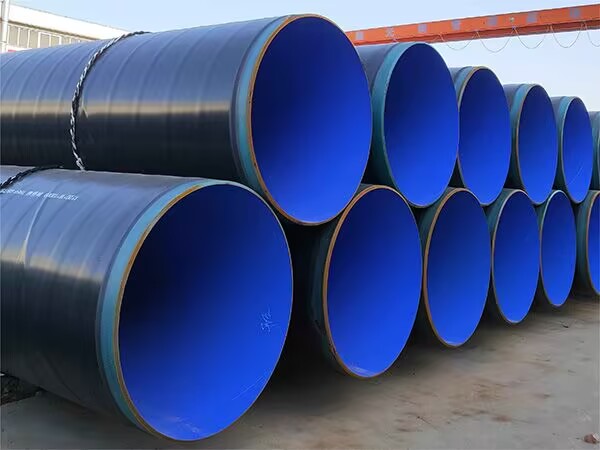Anti-corrosion measures of SSAW steel pipe for drainage
The spiral submerged arc welded steel pipe used in the drainage system is exposed to humid air, soil and other corrosive environment for a long time, and is prone to corrosion. In order to extend its service life and ensure safety and reliability, comprehensive anti-corrosion measures are required. The following are common methods for protecting
SSAW steel pipes from corrosion.

1. External coating protection
External coating protection is the most common form of corrosion protection, which is used to isolate the surface of the steel pipe from direct contact with the corrosive environment. The main coating methods include:
3PE coating: Composed of an epoxy primer, binder and polyethylene outer layer, it offers excellent corrosion resistance, mechanical strength and flexibility for a variety of harsh environments.
Fusible epoxy coating: FBE coating, a coating formed from hot melt epoxy powder, is particularly excellent in soil and moisture environments for its durability and excellent chemical resistance.
Coal tar enamel coating: A traditional asphalt-based coating with good resistance to acidic conditions and moisture, commonly used in underground drainage facilities.
Polyethylene tape wrap: In some cases, by wrapping multiple layers of tape around the steel pipe to form a protective barrier, can effectively reduce the risk of external corrosion.
2. Internal coating or lining
For drainage pipes carrying corrosive fluids, internal coating or lining can effectively prevent fluid erosion of the steel pipe:
Epoxy lining: Apply epoxy coating on the inner wall of the pipeline to enhance its resistance to chemical erosion, suitable for conveying sewage, waste water and other corrosive media.
3. Cathodic protection
Cathodic protection technology slows the corrosion of metals by electrochemical means and is an effective protection measure for buried or underwater pipelines:
Sacrificial anode system: Zinc, magnesium or aluminum is used as the anode, which is actively corroded after connecting with the steel pipe to protect the steel pipe from damage.
Impressed current cathodic protection: neutralizes corrosion through low voltage direct current, suitable for pipelines in long distance or high corrosive environments.
4. Correct installation method
Ensure the standard application of the coating: pay attention to surface cleanliness, uniform coating and curing time.
Prevent mechanical damage during transportation or installation, especially to protect the tightness of welded joints.
If necessary, the pipe should be insulated to avoid corrosion caused by temperature difference or condensation.
5. Regular inspection and maintenance
Ultrasonic inspection: Find hidden corroded or weak areas.
Visual inspection: Observe the integrity of the coating.
Leakage test: Verify that the coating is free of defects.
In summary:
The anti-corrosion measures of SSAW steel pipes for drainage are varied, including coating protection, cathodic protection, proper installation and regular maintenance. Combined use of these methods can effectively improve the corrosion resistance of the pipeline, extend the service life, and reduce subsequent maintenance costs.
Read more: The importance of anti-corrosion treatment for steel pipes
